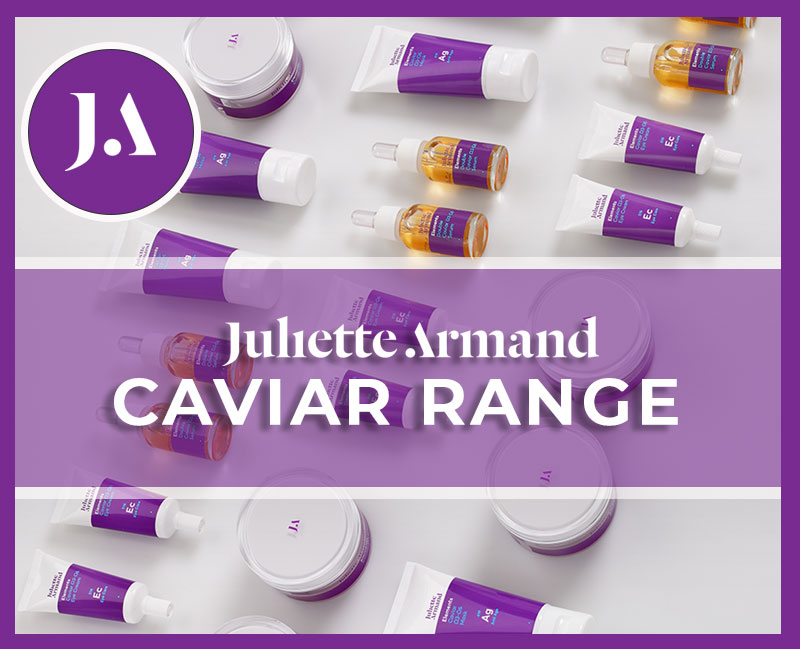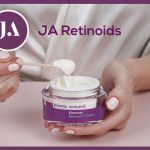
Juliette Armand’s Caviar Facial Treatment
When I mention the word “caviar” in my training sessions, I have a barrage of comments such as “Oh I don’t eat fish, so I would NEVER have this treatment” or “Oh the smell of fish would put me off”. I still laugh every time I hear these comments.
Let me put this myth to rest, here and now, Juliette Armand’s Caviar facial treatment, is by no means AT ALL FISHY! Quite the opposite in fact! The smell is a subtle fragrance which will delight your sense of smell, as well as rich and creamy to the touch. You will fall in love at first smell.
Caviar is rich is proteins, vitamins, amino acids and literally accelerates collagen production.
This opulent anti-aging and firming treatment is the ultimate luxurious treatment of red and black caviar, with microcapsules of Omega 3 and 6 fatty acids. These will gradually release when massaging into the skin and instantly plumps/hydrates the skin. Deeply repairing and smoothing out wrinkles. The elasticity of the skin is strengthened. Dull skin will be given an instant radiance.
This luxurious facial is so indulgent, in fact, you will be deeply relaxed having this salon treatment and the clock will have turned back by a considerable few years, by the time you leave, or should I say, float out of the salon. In fact, you will be so impressed when you walk out of the therapy room, you will be eager to book in for your next treatment.
What to expect as a treatment?
On entering the dimly lit treatment room, you will feel the outside world become a distant memory as you relax to the distant soothing spa music. Relaxing on the bed, your therapist will enter, and your skin will be delighted with a gentle, massaging double cleanse, using JA’s Hydra Cleansing Milk, cleansing but hydrating at the same time, with our own active ingredient, Cleansing Complex ™. Ensuring your skin is squeaky clean, ready to receive the next layers.
A gentle paste of Exfoliating Enzyme Mask mixed with Exfoliating Enzyme Lotion is applied to your face and neck, which gently, removes all the dead skin cells. Your skin will be the smoothest it has been in a long while.
Your skin will readily absorb the Caviar Ω3 Ω6 Serum, a light, yet rich serum, which is decadently massaged into the deeper layers of your face and neck. You will begin to truly let go and fully relax.
JA’s serums have smaller molecules than many other serums, so your skin will thirstily drink up every drop of this rich caviar serum. The microcapsules of Omega 3 and 6 fatty acids, gradually releasing into the skin and plumping the skin instantly. Your skin will by crying out for more.
Your therapist will apply the Caviar Ω3 Ω6 Mask, a rich and creamy mask, to face and neck, rich in caviar, of course, which will lift and firm, as well as moisturise.
Left to drift off to sleep, or at least, relax for a while from any of your day-to-day stresses. Your mind, as well as your skin, will love you for it.
By the time your therapist has returned to remove the mask, you will be in “la la land”.
Your skin will then be treated to yet another layer of Caviar Ω3 Ω6 Serum, which is adding even more moisture to your beautifully plumped and younger looking skin.
Followed by a lathering of Caviar cream to finish this exquisite, luxurious, anti-aging facial treatment.
You will be dying to enhance your experience by purchasing the retail products, Caviar Ω3 Ω6 Serum and Caviar Ω3 Ω6 Cream to take home, so your skin will be rewarded with caviar day after day following your facial.
You will be delighted at how glowing and radiant your skin still is, days following the treatment.
So next time you think of Caviar, be reminded to book your treatment at your nearest JA salon. Or at least, pop online and order the products to use at home.
Juliette Armand products are not tested on animals, are dermatologically tested and allergen free. Using a blend of active ingredients created by their own Chemists, with ingredients sourced from nature. No nasty chemicals and using our own patented active ingredients. The perfect blend to pack a punch when it comes to amazing results for your skin.
Dr Jayne Younie
Training Manager
https://juliettearmand.com.au/product/double-caviar-omega-%cf%893-%cf%896-20ml/
https://juliettearmand.com.au/product/06-antiwrinkle-caviar-%cf%893-cream/





